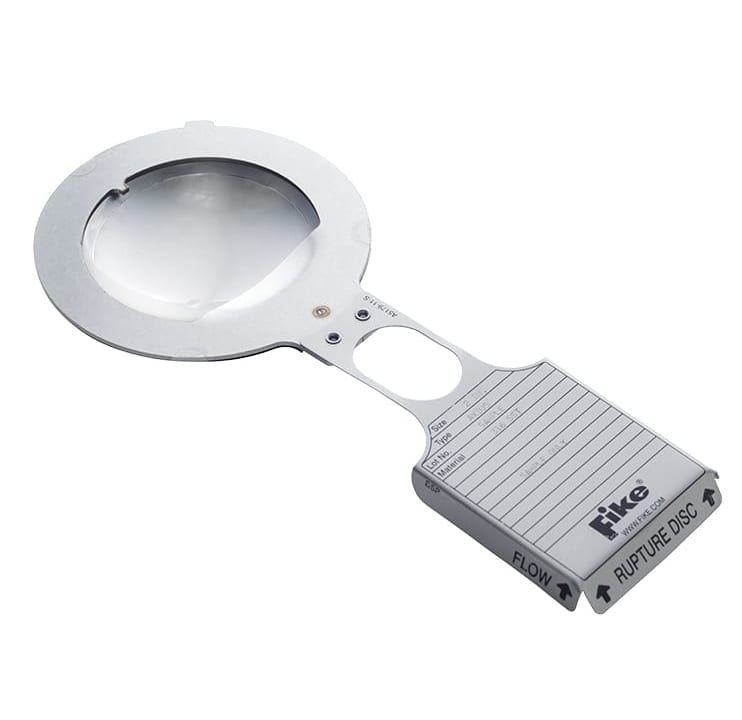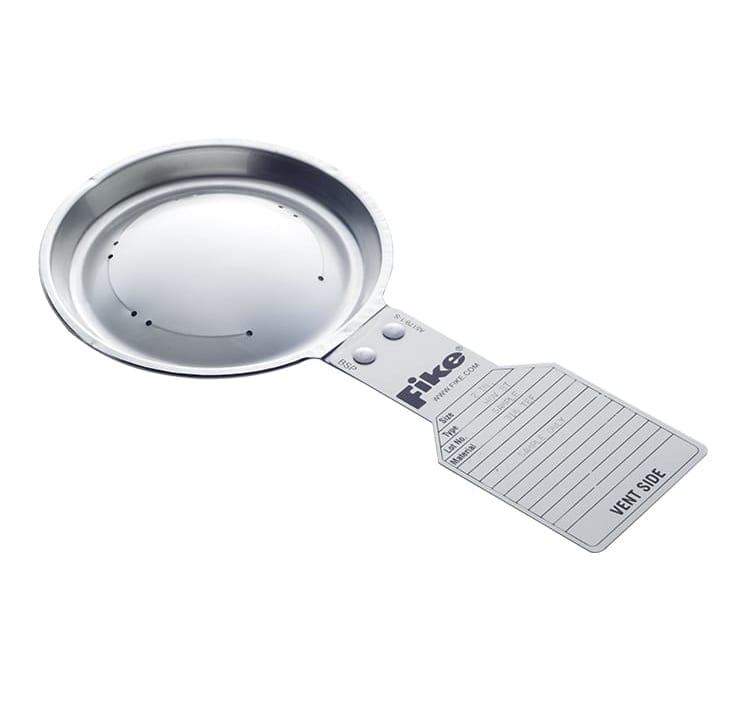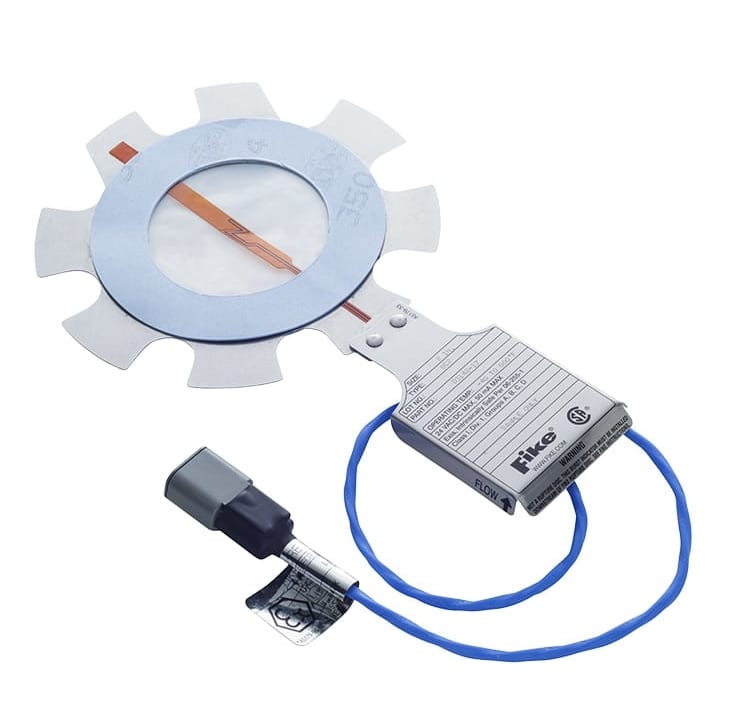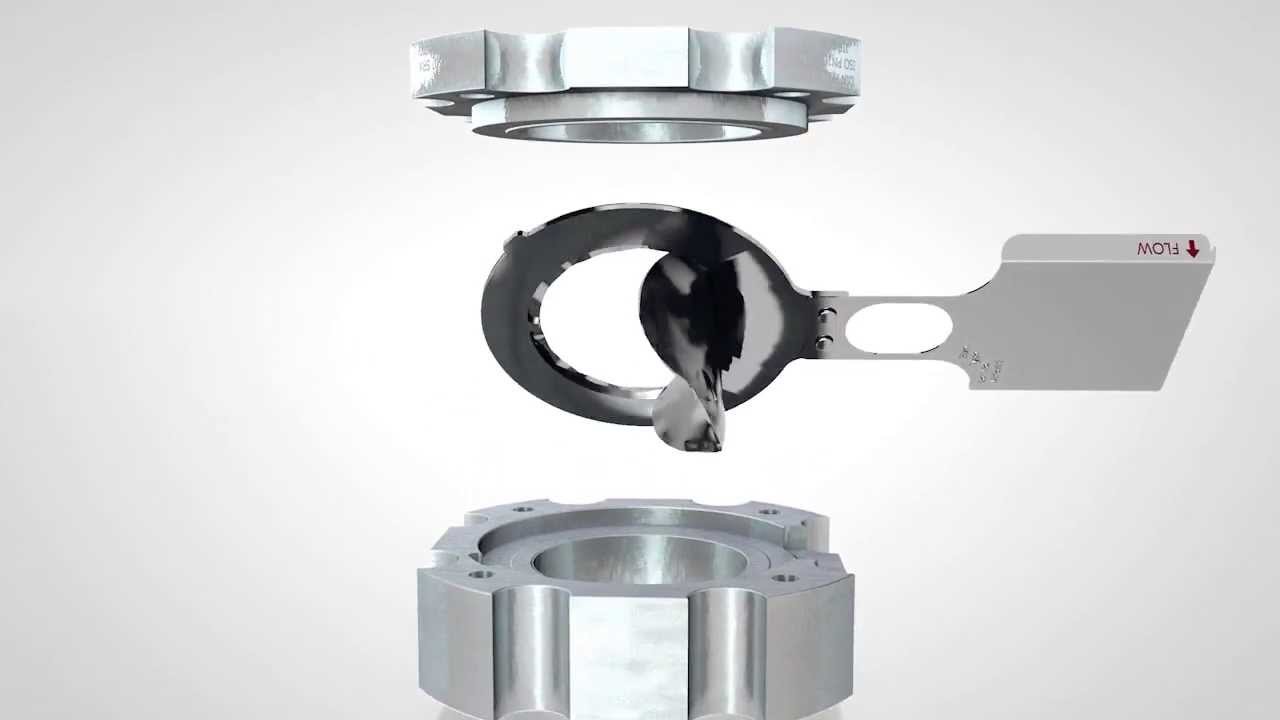What is Specified Burst Pressure?
The pressure, as requested by the client, to which the manufacturing range is applied. Always associated with a specific temperature.
What is Marked Burst Pressure?
The pressure marked on the rupture disc’s tag, which may be shown as a:
If it’s sold with a manufacturing range (other than zero), the marked burst pressure will be the average of the lot acceptance burst tests.
What is Specified Temperature?
The temperature of the disc at the time it is expected to burst, and the temperature correlated to the marked burst pressure.
What is Manufacturing Range?
A pressure range agreed to between the purchaser and manufacturer within which the marked burst pressure must fall. The average of the burst tests must fall within this range. All individual test values must fall within the rupture tolerance.
What is Zero Manufacturing Range?
An exception to the normal definition of “manufacturing range.” The disc is marked at the specified burst pressure—not at the average of the burst tests. All of the burst tests must fall within rupture tolerance.
What is Maximum Stamped Manufacturing Range?
The manufacturing range is applied below the specified burst pressure, such that the maximum pressure that could be marked is the specified burst pressure.
What is Minimum Stamped Manufacturing Range?
The manufacturing range is all applied above the specified burst pressure, such that the minimum pressure that could be marked is the specified burst pressure.
What is Rupture Tolerance or Burst Tolerance?
The tolerance associated with the marked burst pressure within which the disc is expected to burst. Usually expressed as +/- X% or +/- X pressure but not normally marked on the tag. Unless otherwise designated, rupture tolerance is the same above and below the marked burst pressure.
What is Operating Ratio?
-
US Definition – above 40 psi: the ratio of maximum operating pressure to the marked burst pressure of the disc. Below 40 psi, the ratio of the maximum operating pressure to the minimum of the rupture tolerance.
-
European Definition – the ratio of maximum operating pressure to the minimum of the burst tolerance.
What are Cyclic Conditions?
Large magnitude operating pressure fluctuations. The extreme case is full vacuum to the maximum operating ratio of the disc. The fatigue life of the disc is a function of the disc design, the magnitude of the fluctuations and the positive-to-negative fluctuations.
What is Cycle Life?
Generally, a function of the disc’s stress history—not necessarily the frequency of pressure fluctuations. Frequency may be relevant to the client’s ability to understand the peak pressures the rupture disc endures.
What is Capacity?
The amount of fluid flow that will pass through the device using the coefficient of discharge method.
What is Minimum Net Flow Area (MNFA)?
The area used for sizing when using the coefficient of discharge method (Kd = 0.62)
What is Combination Capacity Factor?
The de-rating factor that is applied the rated capacity of a pressure relief valve when a rupture disc device is installed upstream. If a certified value is not available a value of 0.9 may be used.
What is KR?
A unit-less factor that describes the resistance (velocity head loss) the rupture disc device provides to fluid flow.
What is KRG?
The resistance factor determined by flow testing discs burst in compressible vapor. This value can be used for sizing when the disc is in contact with compressible vapor.
What is KRL?
The resistance factor determined by flow testing discs burst in liquid test stand. This value can be used for sizing when the disc is in contact with incompressible liquid.
What is KRGL?
The resistance factor determined by flow testing discs burst both in liquid and compressible vapor. This value can be used for sizing when the disc is in contact with either compressible or incompressible fluid.
What is Scoring?
The manufacturing of the “line of weakness” that may be used to control the rupture disc’s opening characteristics or burst pressure. Various types of scoring are available and include:
-
Laser Ablation – ultra-fast pulsed laser equipment removes material to create a consistent and repeatable line of weakness across an entire lot of rupture discs.
-
Milling – localized removal of material to create a line of weakness by machining processes. May be used in conjunction with other scoring methods on thicker, forward-acting discs.
-
Chemical Etching – the disc surface is masked, leaving the target areas unmasked. Immersion in an electrochemical bath under a controlled set of parameters removes material from the unmasked zones to create a line of weakness.
-
Coining – the disc material flows around the score blade that is pressed into the material, resulting in localized thinning of the material, high residual compressive stresses, and high-stress concentration. In general, the coining process does not cut the material but often does create microscopic mechanical damage to the material.
In Fike’s continued effort to protect people and critical assets, we are excited to help you better understand pressure relief.
To download an informative white paper on FIKE_TB8100-ASME-Code-and-Rupture-Discs, CLICK HERE






